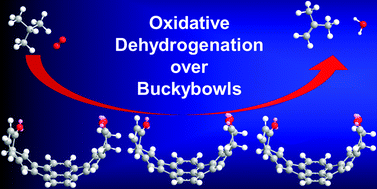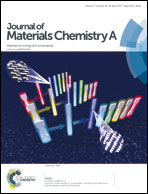Highly dispersed buckybowls as model carbocatalysts for C–H bond activation†
Abstract
Fullerene-derived buckybowl fractions dispersed on mesoporous silica constitute an ideal model for studying the catalysis of graphitic forms of carbon since the dispersed carbon nanostructures contain a high ratio of edge defects and curvature induced by non-six-membered rings. Dispersion of the active centers on an easily accessible high surface area material allowed for high density of surface active sites associated with oxygenated structures. This report illustrates a facile method of creating model polycyclic aromatic nano-structures that are not only active for alkane C–H bond activation and oxidative dehydrogenation but also can be practical catalysts to be eventually used in industry.


 Please wait while we load your content...
Please wait while we load your content...